校園建筑是教育知識的載體,是傳播教育的媒介。寄宿校師生對活動的需求與日俱增,隨著教育觀念的不斷更新與改革,學生活動中心的功能性也隨之不斷豐富。本項目是一個將餐飲、休閑、集會等功能相結合的創新型活動中心,為大型校園創造一個有吸引力的新 “校園節點”。
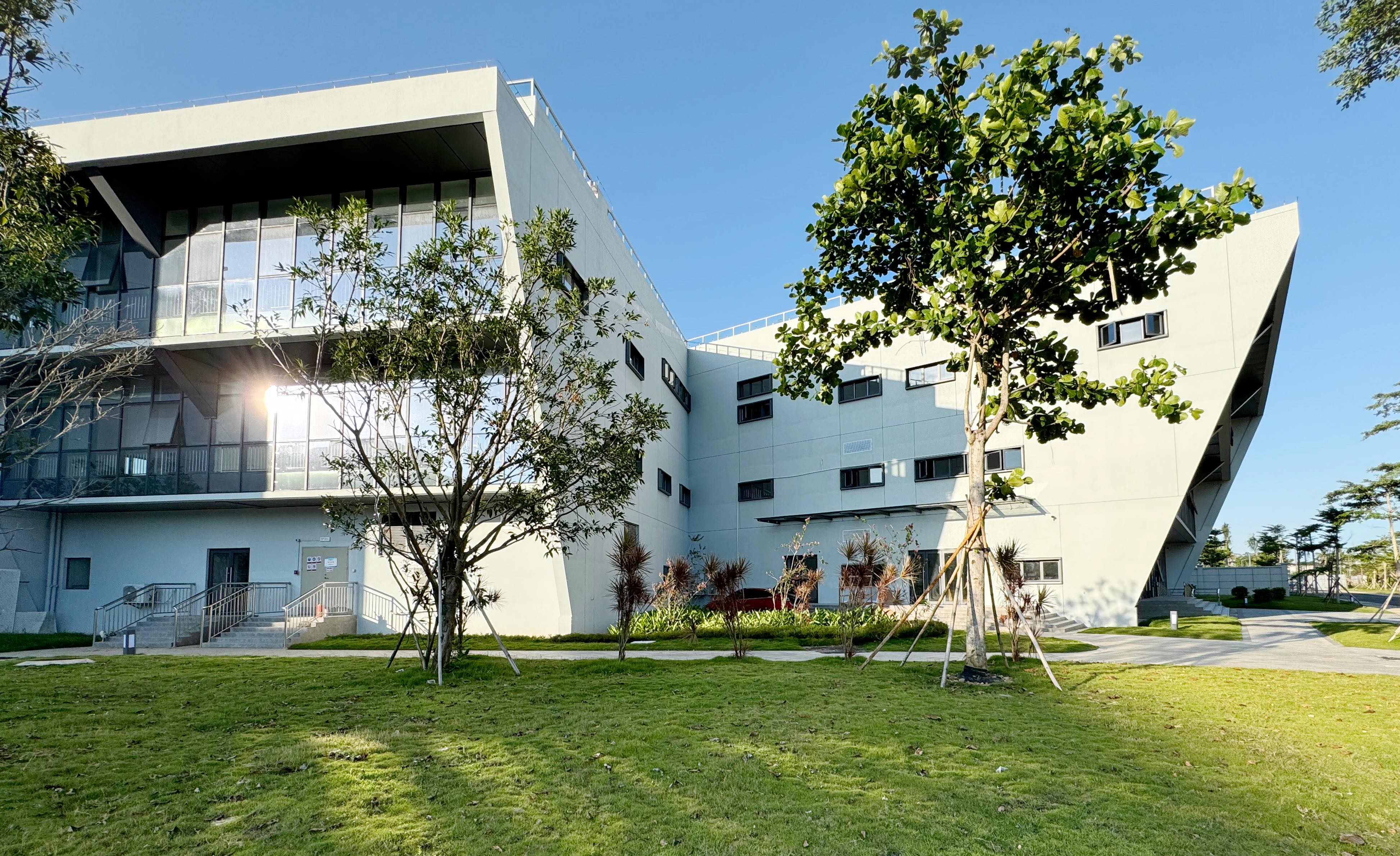
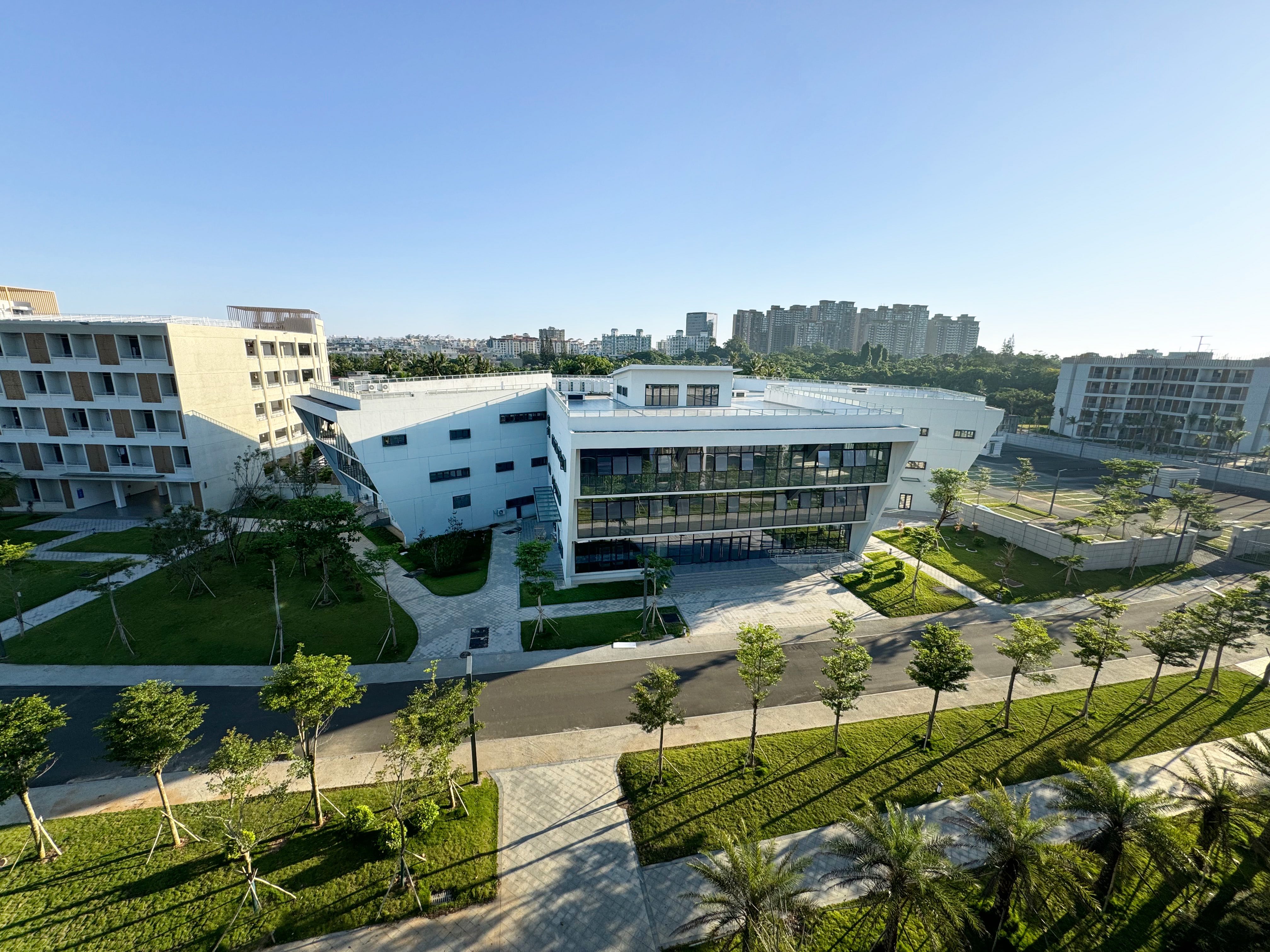
設計背景與理念
瓊海中學校園總建筑面積達九萬平方米,在這一規劃背景下,設計試圖通過以點帶面的方式,創造一個能成為大型校園記憶點的標志性建筑,激發學生交流與活力,提供一個與環境融合的“粗放”空間。本活動中心面積為8340平米,位于校園北端。
Qionghai Middle School has a total campus area of nearly 90,000 square meters. Under this planning background, the design attempts to create a landmark building that can become a memory point of a large campus, stimulate students' communication and activities, and provide an extensive space that blends with the environment. The activiti center has area of 8340 sqm, and locates at the northern end of the campus.
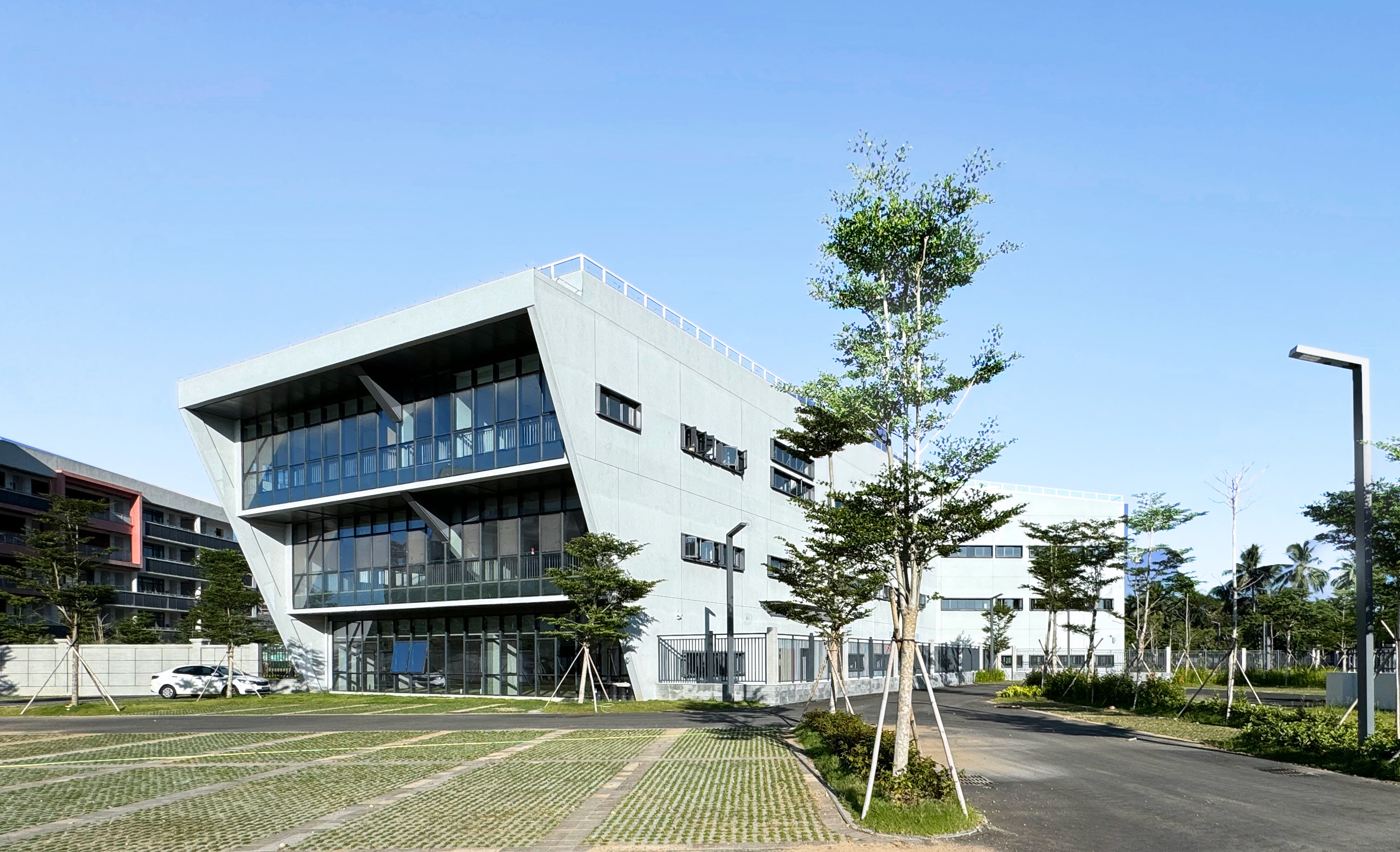
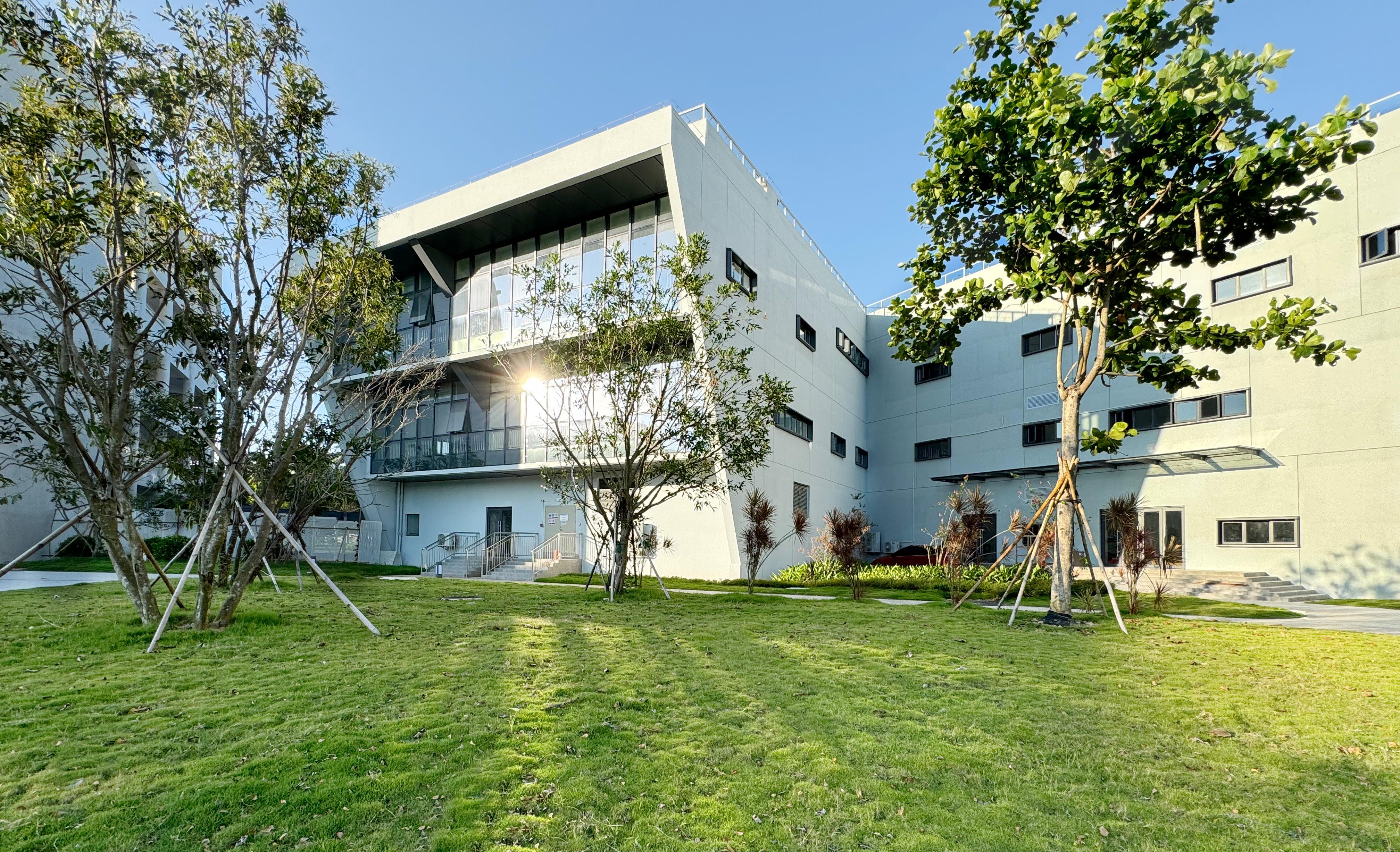
夾縫復雜環境中的創新
建筑打破傳統的方正軸網,引入斜線構圖元素,成功地消解了場地內的消極空間,創造了更多的積極空間。同時,夾角的室外空間形態的作為視覺中心,更有刺激作用。
The building breaks the traditional square axis network and introduces diagonal composition elements, which successfully dispels the negative space in the site and creates more positive space. At the same time, the form of angular outdoor space, as the visual center, is more stimulating.
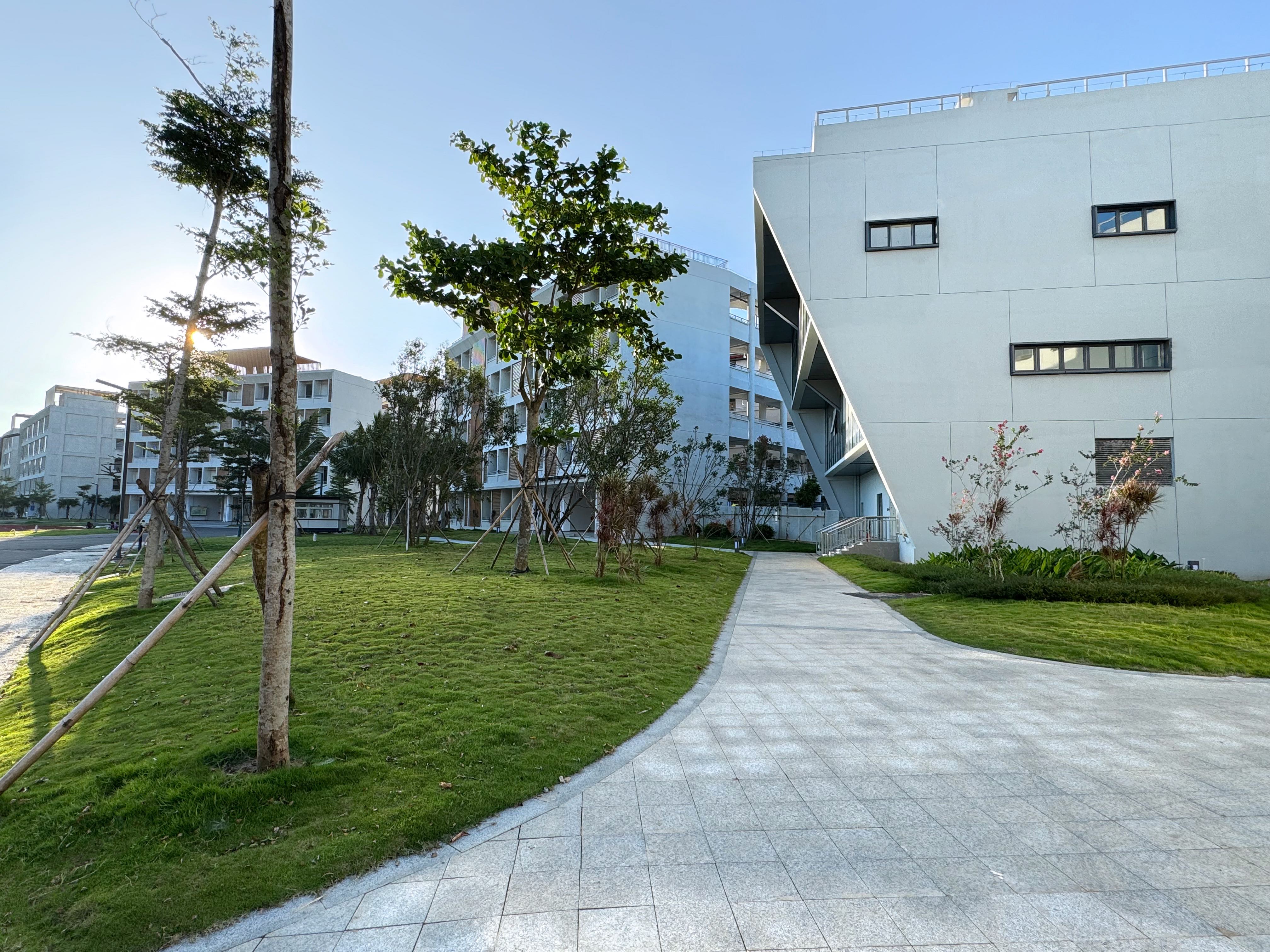
發散型的建筑形態不僅解決了場地的復雜與矛盾性,還塑造了一座具有多向性視線交流的活動中心。東西向的兩片玻璃幕墻面向操場和景觀,在周邊條件復雜的環境中,最優化了景觀視線。
Divergent architectural form not only solves the complexity and contradiction of the site, but also shapes an activity center with multi-directional line of sight communication. The two east-west glass curtain walls face the playground and landscape, which optimizes the landscape sight in the complex surrounding environment.
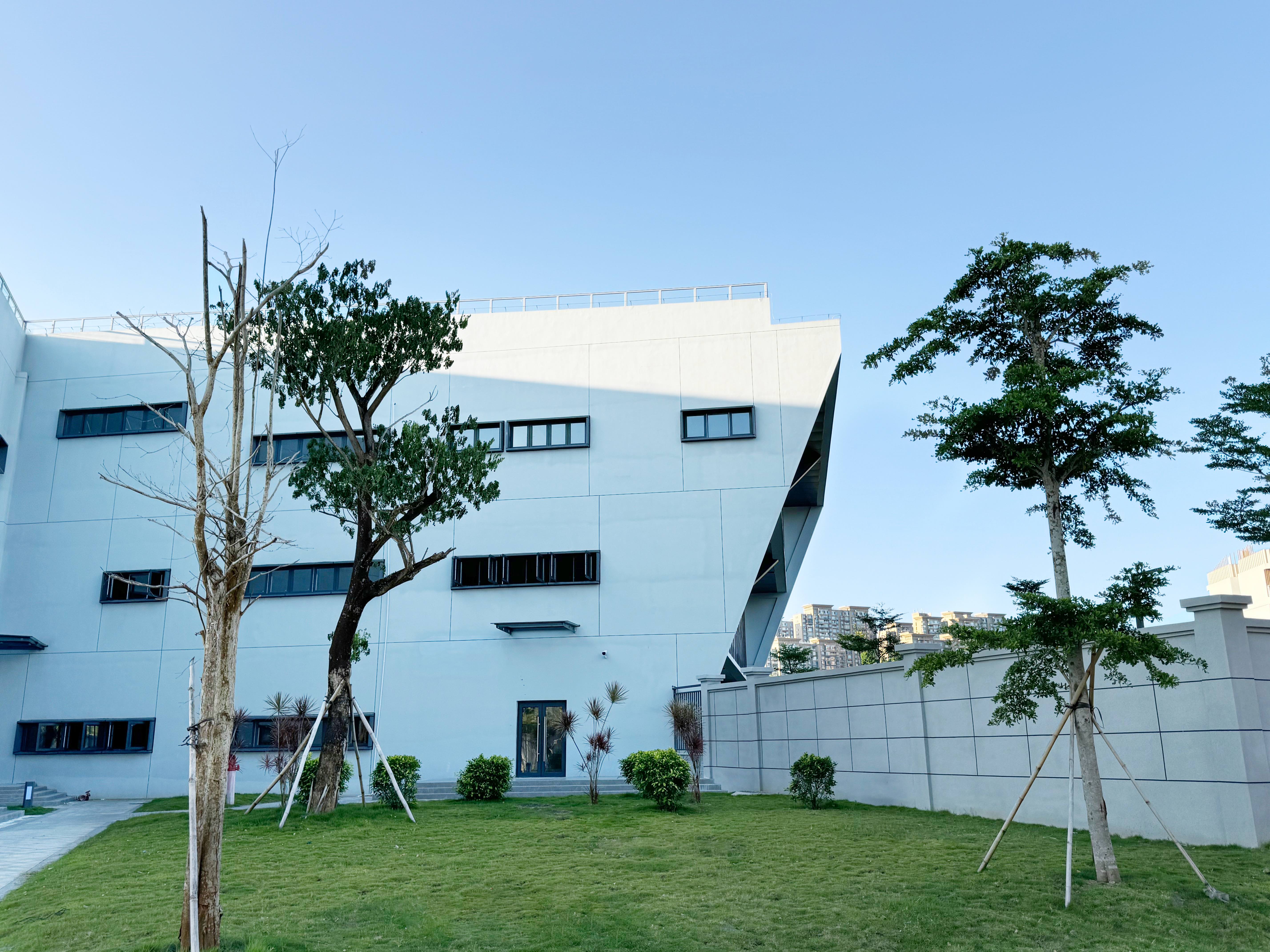
建筑空間尺度的親切感
設計采用發散型的造型手法,形成多個半圍合的外部類庭院空間,創造出了多個“邊界”和“盡端空間”,適合學生停留與使用。空間尺度的親切感能夠最大化地激發學生活動的發生頻率,在集約用地的同時也提升了校園活動空間品質,使建筑外部空間更具活力,更有利于創造一座有活力的校園綜合體。
Divergent modelling technique is adopted in the design, which forms multiple semi-enclosed external courtyard spaces, creating multiple "boundaries" and "endless spaces" suitable for students to stay and use. The intimacy of spatial scale can stimulate the frequency of students' activities to the maximum extent, enhance the quality of campus activities while intensively using land, make the external space of the building more dynamic, and be more conducive to creating a dynamic campus complex.
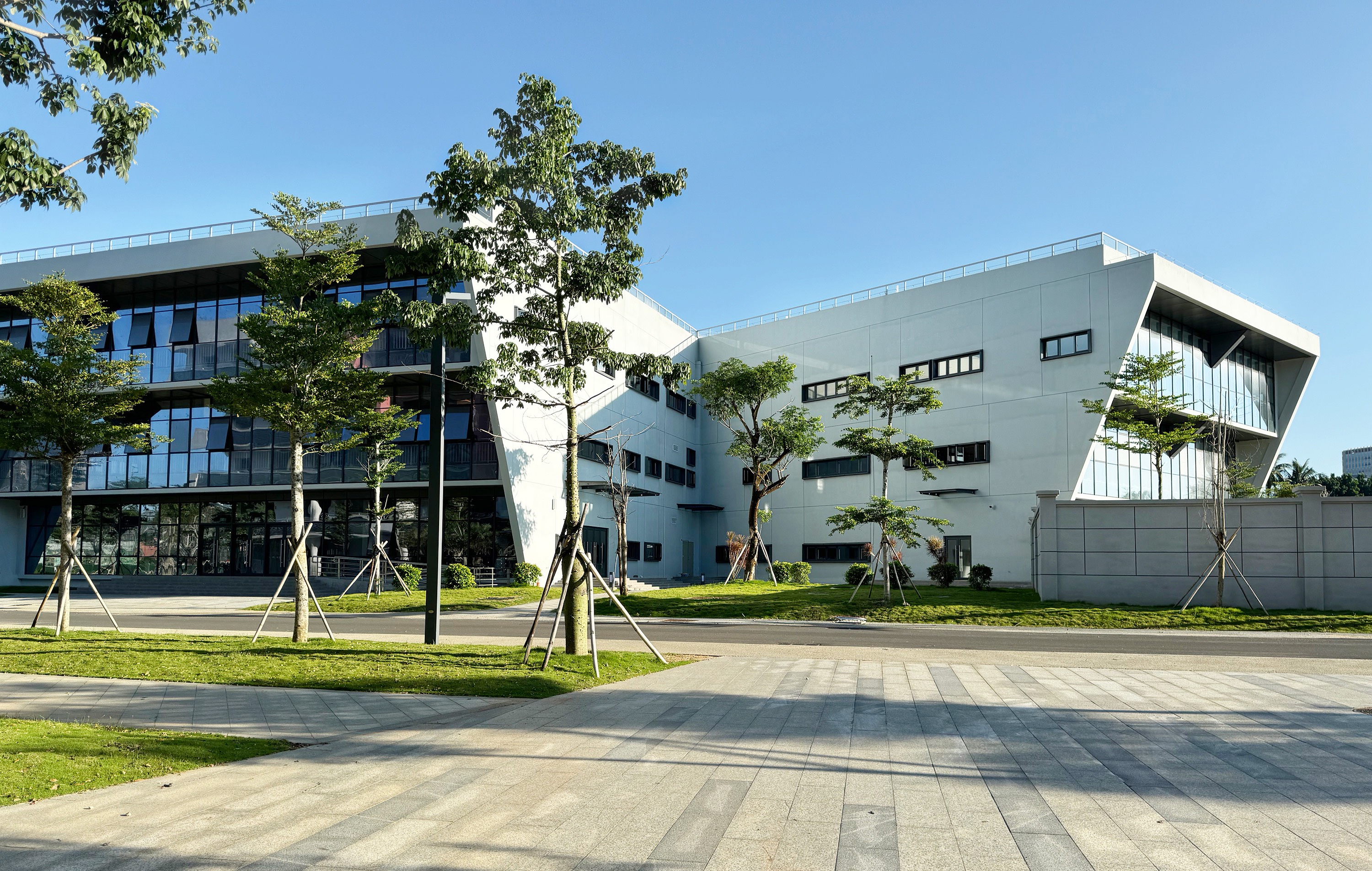
外立面采用仿清水混凝土材質,墻面上設置了條型窄窗,具有粗野主義風格,同時也增強了建筑外部半圍合空間的空間感,在建筑面向景觀的兩個面采用大玻璃落地窗,結合鋸齒形退臺式手法,形成一種粗獷與細膩對比的效果。
The facade is made of fair-faced concrete, and narrow windows are set on the wall, which has brutalism style, and at the same time, it also enhances the sense of space in the semi-enclosed space outside the building. Large glass floor-to-ceiling windows are used on the two sides of the building facing the landscape, combined with the zigzag retreating technique, forming a rough and delicate contrast effect.
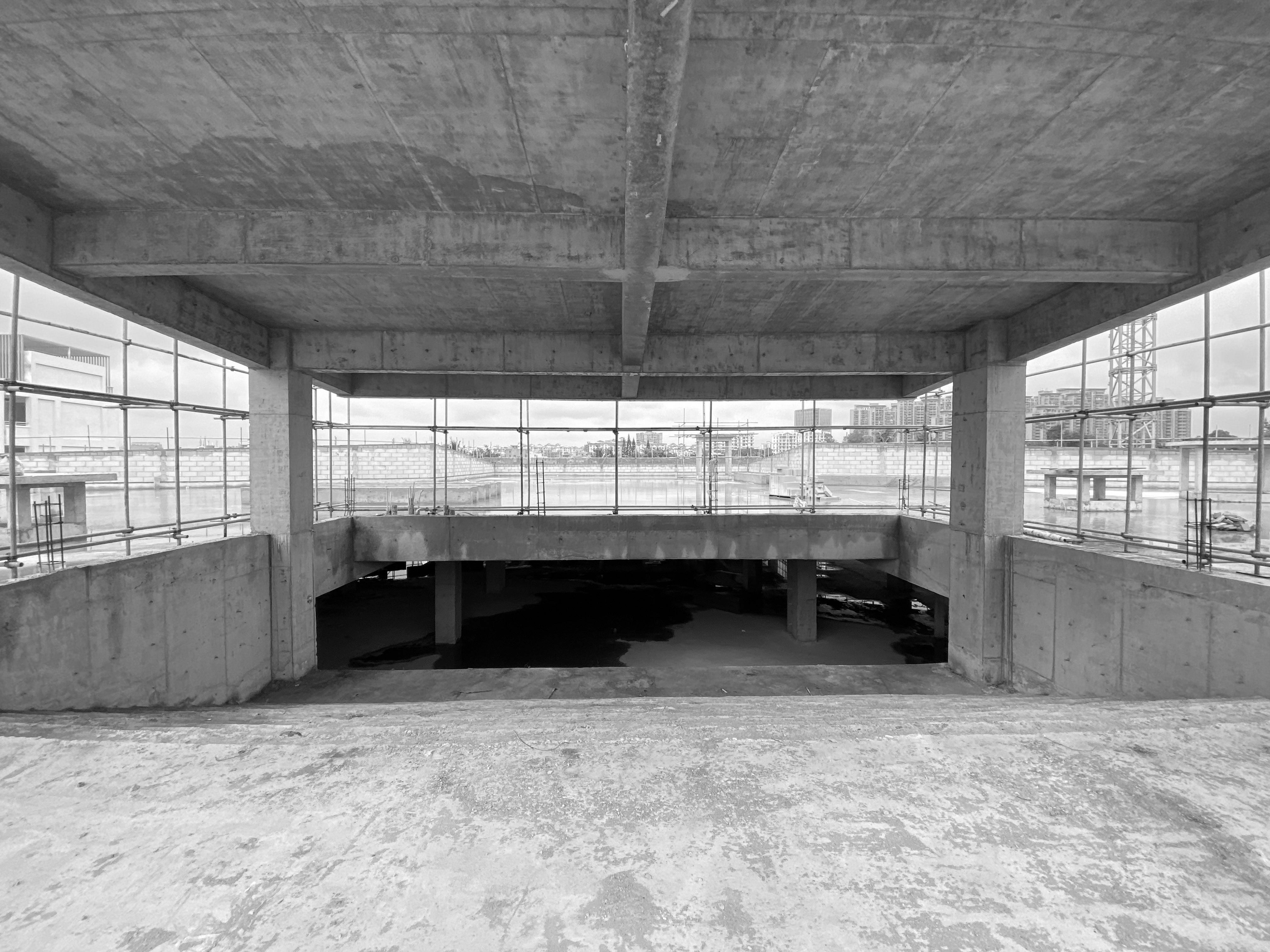
功能空間構成的豐富性
學生活動中心功能多樣,包含餐飲、運動等功能,空間內容豐富且活躍。封閉的活動室減少了使用者的噪音干擾,而開放的活動中心及食堂位于建筑中央核心區域,使空間開闊通透,也促進了學生間的交流與實踐。在活動中心的三層設置了可直通屋頂花園的大臺階,為學生打造了一個充滿互動與室內外交融的場所。
The student activity center has various functions, including catering, sports and other functions, and the space is rich and active. The closed activity room reduces the noise disturbance of users, while the open activity center and canteen are located in the central core area of the building, which makes the space open and transparent and promotes the communication and practice among students. On the third floor of the activity center, there are large steps leading to the roof garden, creating a place full of interaction and indoor and outdoor integration for students.
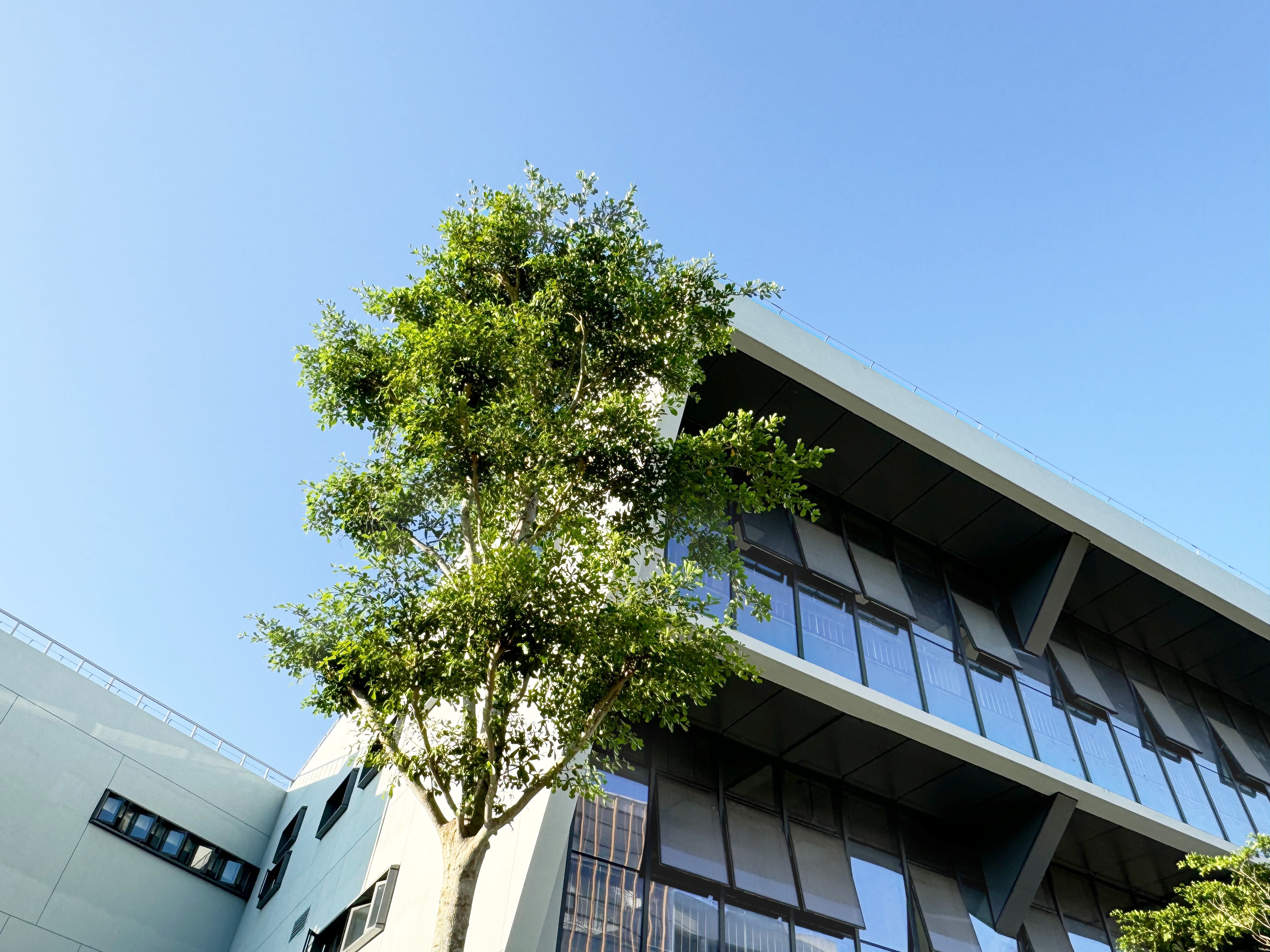
節能的自遮陽型體
鑒于海南強烈的日照和雨季,活動中心外立面采用了型體后退的自遮陽手法。多向度的體量布局與自遮陽系統相結合,在視覺上形成了獨特性,同時延續了校園的可持續理念,打造了一座因地制宜的被動式節能建筑。
In view of the strong sunshine and rainy season in Hainan, the facade of the activity center adopts the method of self-shading with the shape retreating. The combination of multi-dimensional mass layout and self-shading system has formed uniqueness in vision, and at the same time, it has continued the concept of campus sustainability, created a passive energy-saving building adapted to local conditions.
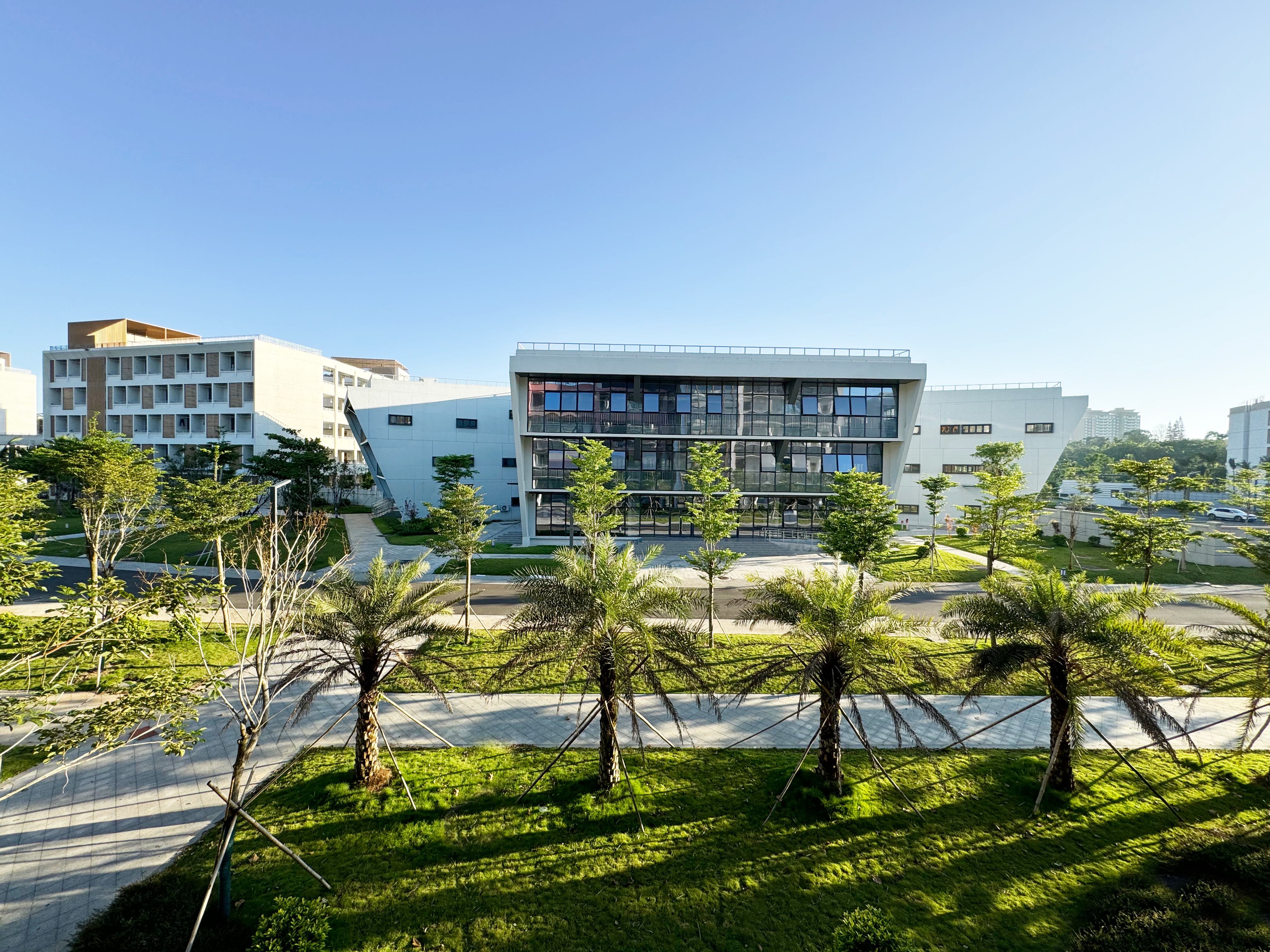
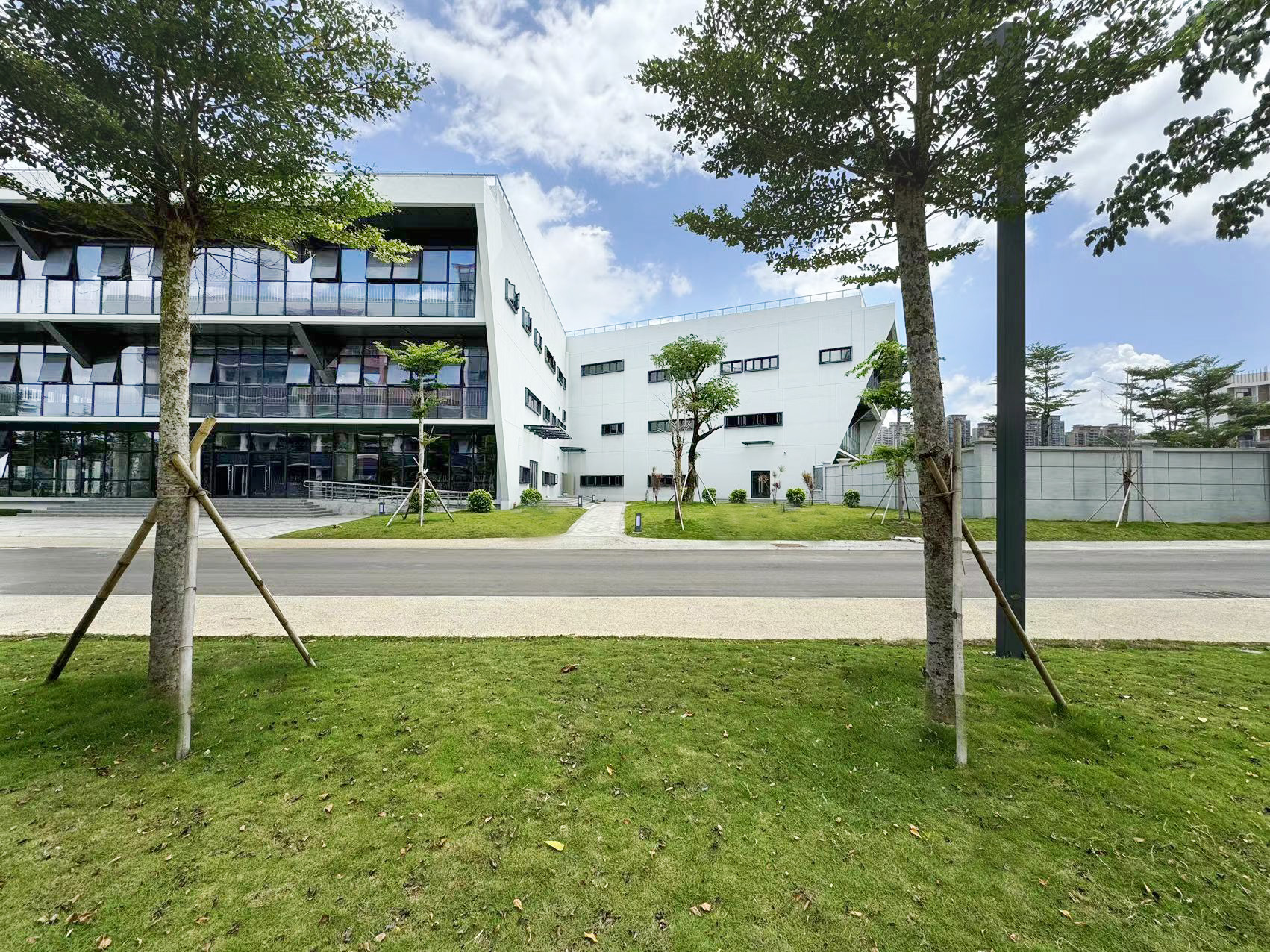
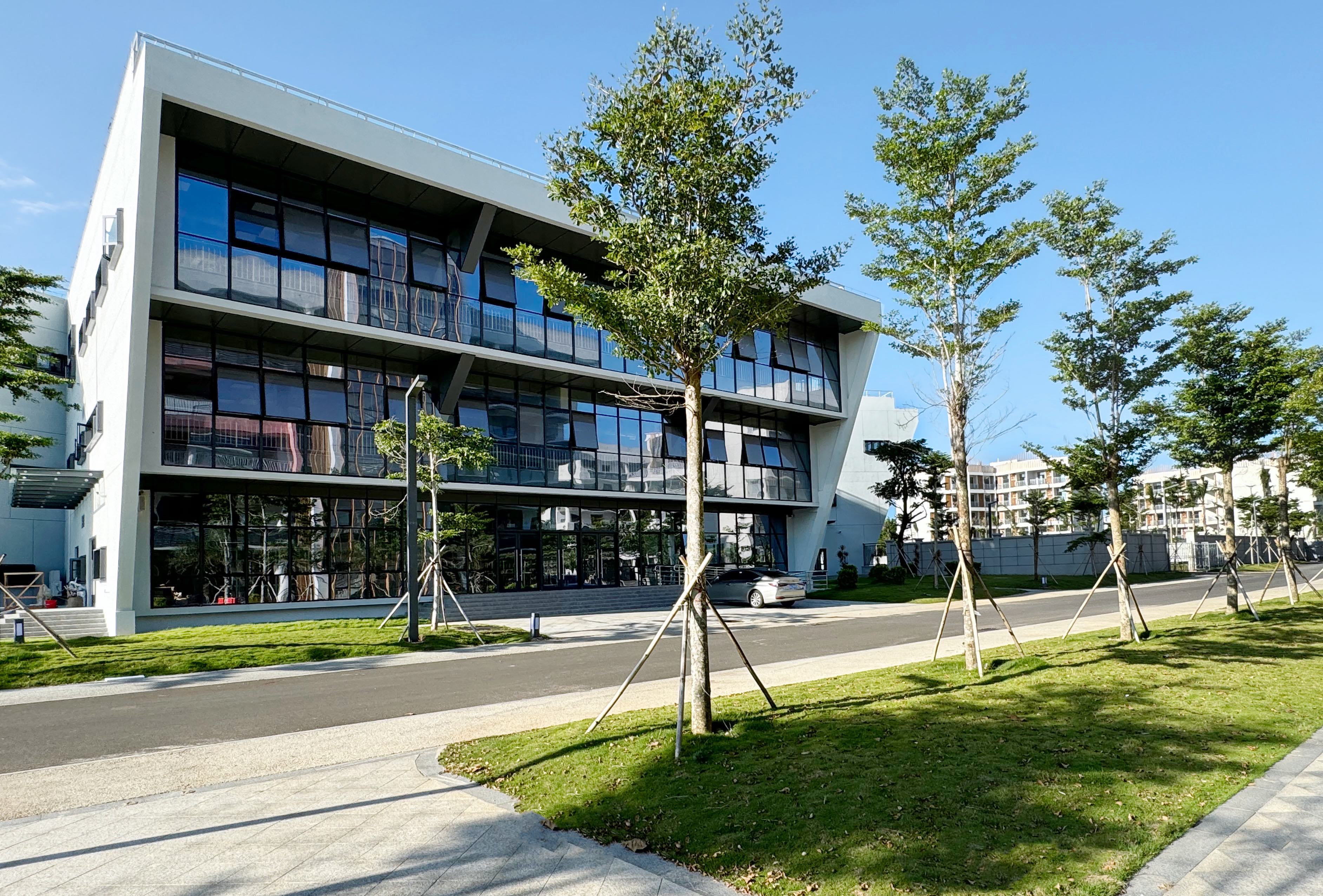
結語:因地制宜與創新模式
校園一個具有特殊性質的“迷你社會”,活動交往空間體現了師生個性化的社交需求,是一個重要的信息交流、知識汲取、人格培育與協同精神培養的場所。這座造型獨特的校園活動中心因地制宜,在尊重場地特性同時也獨具創意。本項目探究了創新型設計語言,為未來的校園設計領域提供了新的思路和方向。
Campus is a "mini-society" with special characteristics. The activity communication space reflects the personalized social needs of teachers and students, and is an important place for information exchange, knowledge acquisition, personality cultivation and collaborative spirit cultivation. This unique campus activity center adapts to local conditions, respects the characteristics of the site and is also unique. In this project we explore innovative design language, which provides new ideas and directions for the future campus design field.
項目名稱:上海師范大學附屬瓊海中學活動中心
項目地點:瓊海
項目面積:8340平方米
建筑設計:ATDESIGNOFFICE安托士建筑設計顧問有限公司
施工總包:中商聯合泰盛建筑集團有限公司
設計團隊:范鐵 Slavo Siska 黃璐瑩 馮睿明 李曉雪 李勇 劉珍珍 萬澤婷 王春暉 封倩 梁文亮 杜漢華 梁彤彤
攝 影:Tony Fan
發文編輯/網站審核|Yirou
版權?建道筑格ArchiDogs,轉載請聯系media@archidogs.com
若有涉及任何版權問題,請聯系media@archidogs.com,我們將盡快妥善處理。
 "/>
"/>
 "/>
"/>
